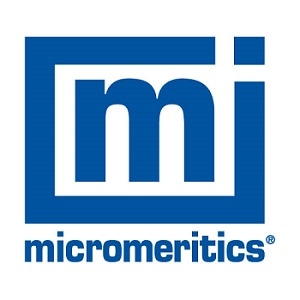This application note presents aluminas, their uses as a vapor trap, and how a BET surface area measurement can be used as an indicator of their performance. Alumina is more accurately known as aluminum III oxide. Porous aluminas are obtained by sintering the material at high temperatures. Alumina in a pellet form is used broadly in science and industry to trap out unwanted water and other vapors.
Industrial Applications of Alumina
Common industrial applications for alumina vapor traps are vacuum pumps and compressors. These traps allow air or gases at the required mass flow rates passing through the trap to the device. Most importantly, the air is supplied dry and free of vapor contamination. The alumina manufacturing process enables specific control of the porosity of these beads and their resultant surface area. The porosity and surface area properties of the alumina bead make it useful as a vapor trap.
These materials normally have surface areas of hundreds of square meters per gram, as measured by the BET surface area method. The large available surface area effectively traps out vapors from the gas stream and adsorbs or “bonds” them within the alumina. With time and use, the alumina becomes less effective as the surface area decreases and the porosity is lost. Attrition between the pellets may cause their breakdown in the trap, resulting in limited air flow and loss of efficiency. Alumina can be conveniently regenerated by heating in an oven. This renewal process, however, cannot be carried out indefinitely. The characterization of the regenerated material and the comparison of its surface area to the virgin material are significant in order to assess on-going use and to choose the right time to start using a new batch of alumina.
Measurements of Alumina Surface Area
The alumina surface area can be easily determined using the Micromeritics TriStar gas adsorption analyzer and the application of the well-established BET method. In this technique, the sample is initially cleaned of contaminants by heating and evacuating, or by the application of a flowing inert gas stream. The sample is analyzed by the instrument at cryogenic temperatures and the quantity of nitrogen gas required to give monolayer coverage of the available surface is determined by the TriStar. To accomplish this, an isotherm is collected to determine how the pressure over the sample changes with the amount of gas taken up by the sample. Collecting the whole isotherm enables measuring the surface area of the sample, as well as its pore size distribution up to 300 nm and obtain a total pore volume (TPV) measurement, if required.
The isotherms in Figure 1 for fresh alumina (A) and for used alumina (B) prove that the adsorption capacity of the fresh alumina reduces significantly with use.
.png)
Figure 1. Isotherms plotted for fresh alumina (A) and A used alumina (B).
Determining Sample Surface Area Using BET Method
The sample surface area, however, can be easily and rapidly determined by the BET method using the data collected between 0.05 and 0.2 relative pressure. The BET surface area value is determined using values obtained for the gradient and intercept of the BET transformation plot together with the sample mass and well-defined physical constants, as shown in this example report.
.png)
Figure 2. Typical Surface Area results for fresh alumina.
Subsequent surface area results (Figure 3)can be compared to the values for the virgin material (Figure 2) and an objective judgment can be made as to whether to reuse the alumina or to replace it. In this case, analyzing the used sample by the BET method will show that the available area has decreased by more than half and, therefore, the alumina must be replaced.
.png)
Figure 3. Typical Surface Area results for used alumina.

This information has been sourced, reviewed and adapted from materials provided by Micromeritics Instrument Corporation.
For more information on this source, please visit Micromeritics Instrument Corporation.